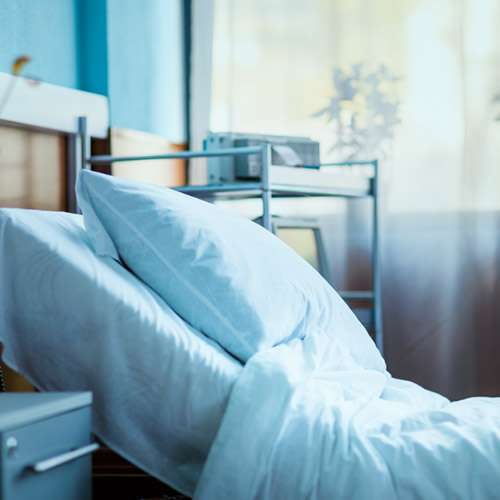Knowing how to prevent pressure sores is key. Pressure injuries are one of the most troublesome problems to treat, and they can develop to become very complex and serious. Managing and preventing pressure sores before they even take hold is the most effective treatment possible.
Otherwise known as pressure ulcers, bedsores, or decubitus ulcers, pressure sores can affect people with poor mobility who don’t get to move around often enough. People who spend a lot of time in bed or seated are more at risk of developing pressure injuries, and it’s vital that caregivers take preventative steps from the beginning.
So here are our top tips for how to prevent pressure sores.
Jump straight to…
How are pressure sores caused?
Pressure sores are caused when there is consistent friction or pressure applied to one area of the body. The constant pressure can reduce blood flow to the skin and can stop it altogether. The cells in the skin then die and break down, resulting in a pressure ulcer.
The following things can increase the risk of pressure sores:
- Immobility or inability to move yourself
- Slouching or sliding down in a chair or in bed (shearing)
- Bony protrusions or areas of the body with less padding
- Poor nutrition and dehydration, resulting in poor skin health
- Damp skin (this could be caused by incontinence)
- General friction
Pressure sore stages
To help healthcare professionals understand how severe a pressure ulcer is, we refer to them as stage 1 to stage 4:
- Stage 1 pressure sores are visibly red, but the skin hasn’t broken yet.
- Stage 2 pressure sores have a break in the uppermost layers of the skin.
- Stage 3 pressure sores have damaged the skin and the underlying layer of fatty tissue.
- Stage 4 pressure sores cover damage that goes as deep as the bone.
If untreated, pressure sores can quickly develop from stage 1 to stage 4. This is why is it so important that carers and healthcare professionals identify potential pressure sores very early on to prevent them from getting worse.
Areas of the body susceptible to pressure sores
Certain areas of the body are more susceptible to pressure sores due to them being pressure points. Think about when you are laid in bed, over time you will feel a build-up of pressure in areas like your upper back, the back of your head, and even your heels. That pressure build-up makes those areas more susceptible to pressure sores.
When you are sat down, these pressure points shift a little. About 75% of your weight will go through your buttocks and thighs, 19% goes through your feet, 4% through your back, and 2% through your arms.
Wherever possible, we shift our seating positions, and we roll over in bed to stop these pressure build-ups from becoming too much. If someone has reduced mobility or does not have the strength to move so often, they will be at a higher risk of developing pressure sores.
How to prevent pressure sores
You might wonder why we’re writing about how to prevent pressure sores rather than how to ‘cure’ them. The sad truth of it is that curing pressure injuries is a very difficult job, particularly for ulcers as severe as stage 4. It can take a very long time for the skin to heal once it has been damaged so deeply.
That’s precisely why prevention is the most effective method when it comes to pressure injuries. If we prevent the pressure sores from occurring in the first place, we don’t need to worry about curing them.
Here are our suggestions for how you can help prevent pressure sores.
Reduce the pressure
We unconsciously reduce the pressure point in our body by shifting our weight and changing our position, but this isn’t always possible for everyone. With that in mind, having some sort of repositioning aid would help to alleviate pressure build-ups.
When it comes to seating, there are a few different things that could help with this. Riser recliners or care chairs fitted with different positioning options are great for making sure that you are redistributing the pressure through different areas of the body. For some examples of care chairs that can help with this, take a look at this article. If you are needing more specific tips for wheelchair users, then this blog post is one to look at.
For people who need help moving in bed, it is wise to ask a carer to help reposition them at least every 2 hours. This could be as simple as rolling someone from their back to the side, or vice versa.
You could also invest in a specialist pressure-relieving mattress that uses specially designed foam or air technology to prevent pressure build-ups. Further information on air mattresses and how they work can be found here.
Take care of your skin
Skin is the biggest organ in the body, and we need to take care of it for several reasons. Unsurprisingly, skincare is key to preventing pressure sores. If we can keep the skin in good condition, then there is less chance of shearing, which often leads to pressure sores.

Skin cleanliness and health is integral to preventing pressure sores.
Although scented soaps might smell good, they can actually dry your skin out even more. Stick to a neutral soap to ensure that your skin isn’t being stripped of its moisture. Neutral soaps like Simple and Pears can be bought in supermarkets.
Keeping your skin clean and dry is key to maintaining good skin health. The introduction of moisture (in the form of perspiration or incontinence) can soften and weaken the skin, making it easier for pressure sores to form.
Moisturising your skin will also help to keep it in good health, particularly after washing. As mentioned above, soap can sometimes strip the skin of its natural oils leading it to dry out. Applying a neutral moisturiser once you’ve washed can make a big difference!
Try to steer away from powdery products (i.e., talcum powder), as these dry the skin out more.
Other ways to prevent pressure sores
General lifestyle and household things can also help maintain skin health and prevent pressure sores from occurring. Making sure bed sheets are a nice breathable cotton, and not wrinkled when in bed can help.
Maintaining good nutrition and hydration also helps your skin. Drinking 2 litres of water a day can make a huge difference in skin health.
If you notice any changes in the person’s skin or discomfort in particular areas, raise this with a caregiver or doctor as soon as possible.
Summary
Ultimately, the key to preventing pressure sores is by maintaining good skin health and making sure you have the right equipment on hand to help wherever needed. Curing pressure sores isn’t an easy task but preventing them is the best way to keep them at bay.
These simple steps and tips can help you to ensure that you are preventing pressure sores at every opportunity.














